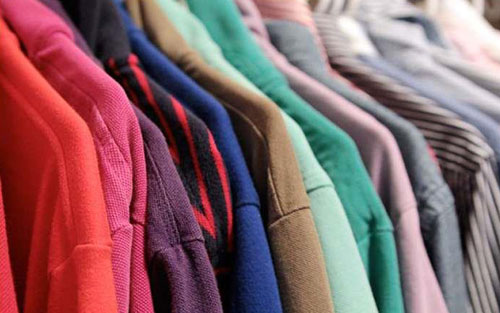"Recovering from the 2018 turmoil, US apparel imports in January 2019 increased 25 per cent to $7.57 billion. The country again sourced from its traditional markets – China, Vietnam, Bangladesh, India, etc in 2019. It had, in the second half of 2018, shifted its sourcing to nearby destinations of Central and South America. From July 2018, US apparel retailers and buying houses began exploring newer markets to source from. It also sourced a lot of high end apparels from Europe. And Ethiopia’s exports to US are witnessing a robust increase."
 Recovering from the 2018 turmoil, US apparel imports in January 2019 increased 25 per cent to $7.57 billion. The country again sourced from its traditional markets – China, Vietnam, Bangladesh, India, etc in 2019. It had, in the second half of 2018, shifted its sourcing to nearby destinations of Central and South America. From July 2018, US apparel retailers and buying houses began exploring newer markets to source from. It also sourced a lot of high end apparels from Europe. And Ethiopia’s exports to US are witnessing a robust increase. There are once again clear signs of shifting supply chains in the apparel market.
Recovering from the 2018 turmoil, US apparel imports in January 2019 increased 25 per cent to $7.57 billion. The country again sourced from its traditional markets – China, Vietnam, Bangladesh, India, etc in 2019. It had, in the second half of 2018, shifted its sourcing to nearby destinations of Central and South America. From July 2018, US apparel retailers and buying houses began exploring newer markets to source from. It also sourced a lot of high end apparels from Europe. And Ethiopia’s exports to US are witnessing a robust increase. There are once again clear signs of shifting supply chains in the apparel market.
US apparel imports decline in June 2018
US apparel imports declined 6.2 per cent in value terms in June 2018. Imports from Canada and Mexico during this period increased 30 per cent and 11.71 per cent respectively. US buyers also sourced more from Guatemala, El Salvador, Honduras, Costa Rica, Haiti, Dominican Republic, Bolivia, Chile, Argentina. US apparel imports from almost all traditional Asian suppliers-China, Bangladesh, India, Vietnam, Cambodia, Thailand, Pakistan, Indonesia, Philippines, among others-declined in the first half of 2018.
this period increased 30 per cent and 11.71 per cent respectively. US buyers also sourced more from Guatemala, El Salvador, Honduras, Costa Rica, Haiti, Dominican Republic, Bolivia, Chile, Argentina. US apparel imports from almost all traditional Asian suppliers-China, Bangladesh, India, Vietnam, Cambodia, Thailand, Pakistan, Indonesia, Philippines, among others-declined in the first half of 2018.
Imports from China declined 5.53 per cent, while imports from Bangladesh fell around 3 per cent. From the African region, imports increased from Ethiopia and Lesotho, and declined from Kenya, despite the AGOA.
Sourcing choices shift in second half of 2018
In the second half of 2018, imports from Canada and Mexico declined by 27.3 per cent and 17.88 per cent respectively, as NAFTA was replaced. Imports from South and Central America continued to rise, with a decline witnessed only from Dominican Republic and Peru. UVRs were significantly higher for Chile, Bolivia, Peru, Ecuador, Panama, Nicaragua.
Imports from China declined by 33.84 per cent from July 2018. Also, US imports from Hong Kong declined by 51 per cent in value and 69.45 per cent in volume. Imports from India, Pakistan, Nepal, Bangladesh, Vietnam, Cambodia, Malaysia, Indonesia, Philippines and South Korea also declined. US imported a little more apparel from Sri Lanka, Thailand, Laos and Japan.
Within the African region, imports from Ethiopia and Lesotho continued to rise, while Kenya suffered an export setback despite the large number of Chinese investments happening in Kenya’s textile industry.
US explores new markets in 2019
US apparel imports in January 2019 increased by 25.34 per cent higher compared to a month before. In January, imports from Canada and Mexico increased by 9.86 per cent and 3.87 per cent respectively.
Imports from Eastern Europe show a mixed trend, with imports rising from Czech Republic, Lithuania and Poland. Imports from Russia declined by 92.62 per cent in January, while those from Belarus increased by 174.51 per cent. Imports from Greece and Turkey also improved.
According to the Commerce Department, consumer spending dropped by 0.5 per cent last month, its first decline since September 2016. The report also indicated a 0.1 per cent drop in the personal income in January 2019, for the first time in nearly three years. Thus, in 2018, US buyers explored diverse markets across the globe. If it aims to remain in the competition, Indian exporters will have to find new ways to service demand from this market.












